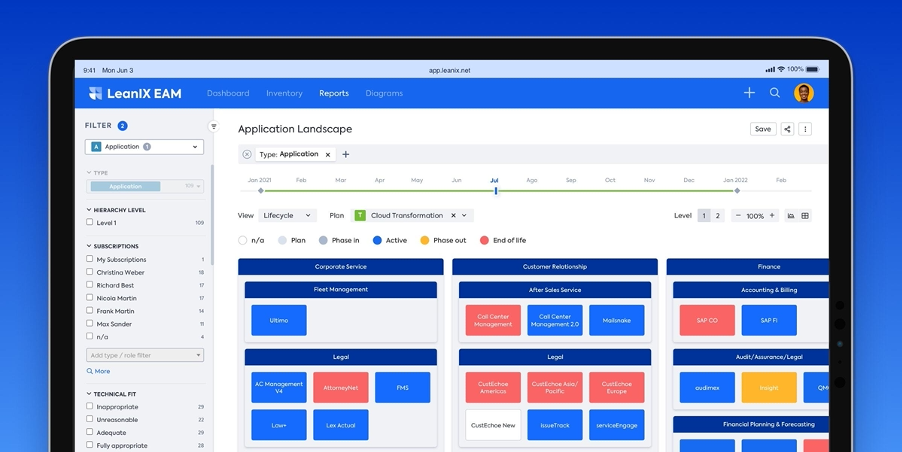
Application modernization is more than a one-off project. Let's explore how you can turn your initiative into a culture of continuous transformation.
Application modernization is key to maintaining organizational agility and performance in a rapidly changing world. Often, it's tantamount to cloud migration, but there is more to application modernization than just moving to the cloud.
App modernization ensures your team is empowered with all the capabilities of the latest technology, both cloud and otherwise, driving performance, reliability, and security. However, modernization can also lead to cost reductions with both reduced prices for cloud options, and also a reduction in maintenance spend.
Let's look more closely at how you can move your portfolio to a leaner, and far less 'mean' configuration. First, however, let's consider what application modernization actually means.
What Is Application Modernization?
Application modernization is the process of identifying where investing in updating your organization's software could increase productivity or save on costs. Often, this is synonymous with cloud migration, but not exclusively.
Application modernization activities include:
- Replacing a tool with a newer, best-of-breed solution
- Upgrading your software to the latest version or a new release
- Rehosting your application in cloud storage
This is part of the Gartner TIME methodology for application rationalization. In TIME, however, the 'M' is not 'modernization', but 'migration' - migrating your users to a new application version or host.
To find out more about TIME, download our free guide:
EXPERT GUIDE: Applying The Gartner TIME Framework For Application Rationalization
Migration or modernization, whichever term you use, the process is intended to add additional capabilities to your application portfolio and prepare your IT landscape for the modern market. Does this always mean moving to the cloud, however?
Does Application Modernization Just Mean Cloud?

As we mentioned above, application modernization is often seen as a synonym for cloud migration. This, however, isn't strictly true.
Application modernization is about updating your technology with the latest innovations, which does not, specifically, mean cloud, as there are other ways to modernize. However, the vast majority of modern applications are modeled as software-as-a-service (SaaS), meaning application modernization will almost certainly involve a level of cloud migration.
Cloud migration is far from straightforward, though. You can't simply lift-and-shift your applications from on-premise, upload them to the cloud, and expect them to immediately perform better.
Before you can begin a business transformation, you must, therefore, modernize your applications to optimize their performance for the cloud environment. This is why application modernization and cloud migration are so closely related they have become synonyms.
Put simply, cloud offers all the benefits that application modernization is seeking. What, specifically, are those benefits, however?
The Benefits Of Application Modernization
Application modernization is about empowering your organization with new capabilities, cutting costs, and improving stability. Whether you're pursuing general application modernization or specifically cloud migration, there are five key benefits, as defined by Forbes:
1 Reduced Spend
Cloud alternatives are often cheaper than on-premise solutions, as well as the onus for maintenance being shifted to the provider. While the initial cloud transformation is challenging and expensive, a cloud-based application portfolio is often significantly less expensive to maintain.
2 Increased Security And Performance
Legacy applications are often a major security risk, and modernizing your application portfolio can be the best way to combat cyber threats and comply with regulation. Likewise, modern applications will have improved uptime and performance.
3 Data Synergy
Modern applications are designed for collaboration and remote integration in a way that wasn't conceived of during the design of most legacy software. Modernizing your applications will often create a software ecosystem where each application effortlessly integrates with your other software.
4 Scale And Resilience
It's far easier to upgrade or downgrade your cloud estate than it is to buy or remove a physical server. Likewise, the lack of physical limitations on your storage and processing power makes your IT estate far less vulnerable to critical issues, such as a fire, another pandemic, or a natural disaster.
5 Innovation
As we stated above, the majority of modern applications are SaaS-based. This means lacking a cloud estate will block you from leveraging software innovations, such as generative artificial intelligence (AI) or digital twin simulations.
How To Begin With Application Modernization
Application modernization is a complex and challenging process. Before you can begin an initiative, you first need to understand:
- Each application in your portfolio
- What each piece of software does
- Who uses each application
- How your software portfolio is connected
- What alternative software is available on the market
Only once you understand this can you make a decision about whether each application is the best business fit for your organization or if there are better alternatives. From there, you can map out your target portfolio and begin to plan a roadmap to get there.
This requires a full investigation into your IT landscape and the application market for each business capability your organization possesses. The results of this investigation then need to be cataloged, visualized, and communicated to your IT stakeholders.
From there, someone will need to co-ordinate an agreement among all stakeholders regarding which applications will be modernized. The actual roadmap will then need to be followed and the business transformation completed.
This still isn't the end of application modernization, however. The value of the initiative doesn't come from just one transformation.
Regular Application Modernization
Application modernization is a never-ending process. As technology continues to develop and new innovations are discovered, you must continually re-assess your portfolio on a regular basis.
Too often, once a business transformation is completed, all the research and information that supported it is deleted or misplaced. That means that every time you conduct an application modernization initiative, you have to start out from scratch.
If you can constantly track your applications, their purposes, and their planned obsolescence, then you won't need to repeat your initial research every time. Instead, modernization becomes almost automated.
With a system tracking your applications, application modernization ceases to be a one-off initiative that takes 12 months and needs repeating every year. Instead, it's a simple matter of receiving a notification every time an application needs to be updated or replaced, with a prepared recommendation of what it should be replaced with.
That system is LeanIX EAM.
How LeanIX Can Support You

Application modernization improves business performance, ensures IT security, and enables organizational agility, and migrating applications to the cloud remains the standard approach. To maximize the benefits of moving to the cloud, migrations require proper planning, management, and tracking.
LeanIX EAM can log, collate, and visualize comprehensive information about each application in your portfolio and how your IT landscape is interconnected. You can then model a target state for your application portfolio and create a roadmap for business transformation.
To find out more about how LeanIX EAM can transform your application modernization project into an automated, repeatable process, book a demo:



